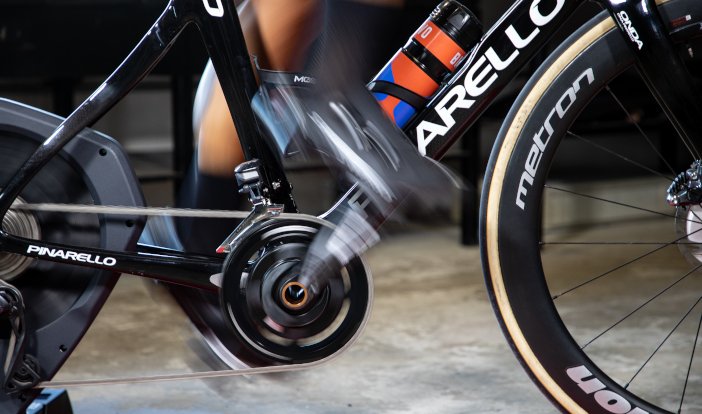Marco Compri, technical coach of the Italian Cycling Federation and head of the training projects at Bikevo, explains us the correct way to train for cycling.
Question: Who can take the cadence power test?
A: It is a test that can be applied to all categories of cyclists, starting with youth.
Question: What data can be obtained from the power-cadence test?
A: You can get the peak power and revolutions per minute (rpm) that represent, implicitly, the maximum force for a time of 1-2".
Using a simple formula from physics, you can transform the watts into newton and as such trace the rpm-force ratio:
Question: What information am I getting from the power (or strength)-cadence curve?
A: By analyzing the different curves and/or ratios of the same individual during the agonistic season I am able to:
-monitor the longitudinal pattern of force in terms of increases/decreases;
-monitor whether changes in peak rpm occur in relation to the maximum power expressed in the test.
Both aspects provide information if the expected result and the collected data are congruent.
Question: What information does the wingate test provide?
A: It defines the power (not the capacity) of the anaerobic lactic system.
Question: Who can take the test?
A: It can be used for junior categories and onwards; even if it is an elitist test for sprinters it can certainly be proposed to different types of cyclists.
Question: What data is derived from the incremental test?
A: You can obtain the power output and heart rate, VAM (= maximum aerobic speed) and anaerobic threshold.
The first is the power reached in the last time interval completed in the incremental test and that can be sustained for 6 minutes (± 1 minute); the second is 81% of the peak power and is sustainable for 30 minutes.
By monitoring the progress of the two peak values of the power-cadence curve and the incremental test, I can verify whether the training cycle is balanced or if training is favoring one of the two at the expense of the other.
Question: How do you obtain the power/time ratio?
A: It is obtained from at least three values that represent the bioenergy systems. These values can be derived from laboratory tests (peak power curve watt rpm; average watt, peak watt from the incremental test and threshold watt, equal to 81% of the peak reached in the incremental test together with the corresponding times: 2 seconds, 30 seconds, 6 minutes, and 30 minutes) or they can be obtained by performing at least three tests to exhaustion (30 seconds to 60 minutes) preferably carried out on the road or the track so that he various combinations of power and time can be determined.
How do you establish the relationship between work and time?
R: Once you have data on power and time, you need to transform the data on power (watt) into work (joule): as mechanical power in watt is the amount of work in a certain time.
Power (Watt) = Work (J) / Time (sec)
from which you derive:
Work (J) = Power (Watts) X Time (sec)
This way it is possible to transform the power curve on time into a linear relationship between the time unit (sec) and the total amount of work done during the exercise (J).
Since the numbers are very large, I divide the data obtained per thousand by transforming the joule into Kilo Joule
TW = AWC + CP * Tlim
where
TW = Total Work
AWC = Anaerobic Work Capacity
CP = Critical Power
Tlim = Time unit
Example:
y = 0,2737 * x + 13,995
The "x" coefficient is the CP, in this case noted as Kw; to get the watt I will have to multiply the value by 1000.
CP= 273.7 watt

Editorial Board
You might also be interested in


